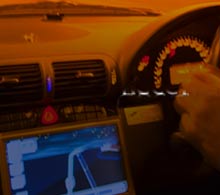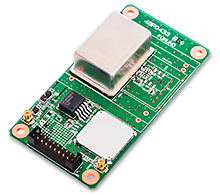Articles for ITS market When will self-driving buses (service cars) be put to "full-scale" practical use?
Background and Lessons Learned from Contact Accidents at the Paralympics
The accident that occurred at the Tokyo Paralympic Village between a self-driving bus and a pedestrian was widely reported by various media outlets.
The accident occurred at around 2:00 p.m. on August 26, 2021, when a visually impaired Paralympic athlete was crossing an intersection without traffic lights and contacted a self-driving bus that was approaching the intersection and turning right. This self-driving bus is the "e-Palette," which Toyota is planning to commercialize.
The day after the accident, Toyota's president Akio Toyoda explained the circumstances of the accident as known at the time on Toyota's own video channel, “Toyotimes”.
Then, on August 30, Toyota and the Tokyo Paralympic Organizing Committee announced that they would resume operations after taking safety measures to prevent similar accidents.
According to the announcement, the circumstances leading up to the accident were the vehicle stopped after sensing a person in the intersection. The operator in the vehicle then resumed driving after checking the safety of the surroundings.
Furthermore, the operator judged the situation inside the intersection and started to decelerate the vehicle by manual operation.
Then, the Paralympic athlete crossed the street, and the vehicle's sensors detected and automatically applied the brakes, and the operator further applied the emergency brakes, but was unable to prevent the contact accident.
In addition, there were two guides at the intersection, but "there were no traffic lights.
The environment was not conducive to guides being able to check pedestrian movements and vehicles from multiple directions.
Especially in situations with such a diverse group of people as the Paralympics," according to the analysis.
They also pointed out that there was not enough coordination between the guides and the operators.
As future safety measures, the buses will be switched from automatic to manual operation during the Paralympics, and the volume of the alarm sound when approaching will be increased.
The number of guides will also be increased from six to 20.
It is important to note, this demonstration test was planned to showcase and introduce Japan's automated driving technology to the world. Level 4 driving without an on-board operator is technically possible, but in order to ensure vehicle safety, a method of relying on the "human eye" of an on-board operator, a guide, and remote monitoring was adopted.
Nevertheless, the fact that these accidents occurred is an extremely important lesson for the future use of automated vehicles (service vehicles) in public transportation.
 A Nissan Easy Ride vehicle in action Source: Nissan
A Nissan Easy Ride vehicle in action Source: Nissan
 A view of the driver's seat of an Easy Ride vehicle Source: Nissan.
A view of the driver's seat of an Easy Ride vehicle Source: Nissan.
 A view of using NTT DOCOMO's app in conjunction with an AI-operated bus Source: Nissan.
A view of using NTT DOCOMO's app in conjunction with an AI-operated bus Source: Nissan.
Nissan to Start Third Phase of Automated Driving on Demand "Easy Ride" Demonstration Experiment
Nissan will conduct the third phase of the "Easy Ride" automated driving on-demand demonstration test in the Minato Mirai district of Yokohama from September 21, 2021 to October 30, 2021 (8:30 a.m. to 4:00 p.m.).
This time, it will be linked to the AI-operated bus, and an application service for smartphones that NTT DOCOMO is running nationwide.
The AI-operated bus is a system in which AI (artificial intelligence) sets the best route and time, based on the status of boarding and stopping requests. According to Nissan, NTT DOCOMO customized the system to fit Easy Ride based on Nissan's various requests.
In addition, the e-NV200 EV, which will be the vehicle, has an onboard ECU with a system for monitoring and making decisions while driving. As a result, unlike the previous two demonstration tests, there was no operator in charge of the system on board, and the support car that follows the vehicle from behind was also eliminated.
The Easy Ride's route is in areas with heavy traffic of people and cars, such as the Red Brick Warehouse and the Yokohama Chinatown areas. Even with Level 2 automated driving with an operator in the driver's seat at all times, careful consideration must be given to ensuring safety.
The timing of the third phase of the Easy Ride demonstration test is set just after the aforementioned accident at the Tokyo Paralympics athletes' village, which means that Nissan will once again be raising awareness for the need to ensure safety of its operations.
On September 9, Nissan held an online briefing for the media regarding the third phase of the Easy Ride demonstration test.
would focus on developing a realistic system for the operation of self-driving service cars. They said, "It's all about doing things step by step, starting from where we can, rather than jumping multiple steps ahead.”
Commercialization of self-driving service cars is still far into the future.
Nissan also touched on the business potential of self-driving service cars.
Nissan is envisioning a fusion of MaaS (Mobility as a Service), which links various services in an IT environment. It includes the reuse of EV storage batteries, freight and passenger transportation, and VGI (Vehicle Grid Integration). And connects EVs with social infrastructure, in a way that is tailored to the actual conditions of each region, including urban or rural.
However, he explained they are not at the stage of indicating the specific balance of the project and that they will continue to study the feasibility of the project through demonstration tests in various parts of the country.
As for automated driving, mass production of Level 3 owner-driven cars has started, but demand is likely to be limited due to the high price. For the time being, the mainstream of owner-driven cars is likely to be Level 2 with advanced functions.
As for service cars, further improvements for safe and secure operation and concrete activities for commercialization are essential.
Writer introduction

Mr. Kenji Momota Automotive journalist
His major is the world automotive industry and he is also familiar with the energy industry, IT and the aging society problem as the related fields. He acts around the world based in Japan and USA and writes for the general magazines, the technology journals and the automotive related media etc.
He is also commentator of motor race and world's motor show on TV program based on his career of the driver of Indy Racing League and NASCAR. In recent years, he has been covering about a paradigm shift from developed countries to developing countries, the motorized vehicle like EV and the telematics.
FURUNO ITS Journal
Click here for the latest articles after 2022 (in Japanese)2022
- The "realistic" self-driving roadmap shown by the Japanese government and a hands-on report on the latest Subaru EyeSight X
- Will FCVs (Fuel Cell Vehicles) Become Popular? ~New Movement in Toyota and Honda~
- The 'Complete' online sales of new cars start in Japan. Will this new way of buying cars take root?
- Many Firsts! On-Site Report from Tokyo Auto Salon 2022 - The author, who knows what goes on behind the scenes, looks back on 40 years of history. -
2021
- "Moving toward zero traffic fatalities for four-wheeled and two-wheeled vehicles globally in 2050" ~Experience on Honda's latest safety technologies~
- Tsuneishi Shipbuilding's building and DX, an exclusive visit to the main factory
- Japan's Smart City: New Moves toward Practical Use
- When will self-driving buses (service cars) be put to "full-scale" practical use?
- Utilization vehicle data during disasters
- Toyota-led Connected Technology to Transform Commercial Vehicle Business -From light trucks to large trucks and buses-
- Toyota enters the connected car "Personalization" business
- Japanese automakers' carbon-neutral strategies swept up in ESG investment
- Drive experience of the latest autonomous vehicle models and advanced driving support systems
- Will carbon neutrality accelerate the trend to strengthen LCA (Life Cycle Assessment)?
- Semiconductor shortage exposes realities of the automotive industry
- Online Autonomous Driving Contest Enhancing development of Human Resources
2020
- What happens to CASE when gas cars are banned in Japan?
- When will Flying Cars be launched?
- Expectation vs. reality:Autonomous Driving in Japan
- V2X, Becoming increasingly important in autonomous driving
- Technology of Subaru “EyeSight X”
- Lifestyle-oriented French cars gain popularity in Japan
- Human-oriented smart cities are wanted
- MaaS and CASE, how would automotive industry change after COVID-19?
- The beginning of virtualization era, triggered by COVID-19
- Trend of EV shift and consumer demands
- TOYOTA Press conference about ADAS - Releasing algorithm for "sudden acceleration suppression during attempted sudden acceleration" free of charge -
- The Japanese automotive industry in 2020 - 3 turning points -
- "Using a smartphone while driving" and "Level 3 automated driving"
2019
- Motor show business model is at a turning point - Tokyo Motor Show Report -
- Commercialization and monetization of MaaS - ITS World Congress Singapore Report -
- Android Automotive pays attention to V2X - Report from the Frankfurt Motor Show 2019 in Germany -
- Automobile Distribution Revolution and DCM (Data Communication Module)
- Connected business potential and newly proposed "eMaaS" by Honda
- 5G services for practical use are multiplying
- Connectivity technologies attracting attention due to frequent traffic accidents
- Shanghai Motor Show report -SUV, EV, Automated car & 5G-
- Drone Business roadmap and updates to Michibiki (Quasi-Zenith Satellite System)
- MaaS (Mobility as a Service) "town development." Full-scale promotion for a national project
- CES organizer states "Data Period in 2020s." Transformation of the Automotive Industry in CES, US "-CES2019 Report-"
- "Return to Origin" directed towards the age of change, automatic operation and connectivity
2018
- New proposal for Private Car Automated Driving Level and other Hot 5G Technology Topics
- Standardized EV charging infrastructure concerns in Europe, US, Japan and China - Kobe EVS 31 field report -
- Touring a pure car carrier and a test drive of the latest hybrid car
- Planning stage products are exhibited at the newly established visualized mobility service "TOYOTA MOBILITY SHOWROOM".
- Potential “Community Car-share” program promoted by local residents
- CES Asia Report 2108
- Companies attempt new Vehicle-to-Infrastructure communications, including traffic volume measurements and vehicle positioning. -ITS Asia Pacific Forum in Fukuoka-
- Geneva show in Switzerland. Flying cars and MaaS (Mobility as a Service) were hot topics.
- EV (Electric Vehicle) proposals by country
- MaaS competition through service mobilization, M & A and technical field collaboration is accelerating. - The CES 2018 Report -
2017
- Big data’s initiative and fight for the automotive industry. Cooperation among companies becomes increasingly important.
- Connected car and road-to-vehicle communication automatic operation
- ETC (Electronic Toll Collection) and ETC2.0. Current situation and projected future
- Rapid development of sharing economy
- Germany is first to recognize level 3 automated driving
- ITS EU 2017 Field Reports -Automatic Operation and the eCall-
- From Infotainment to ITS, the competitive area is spreading in the car big data industry.
- GTC (GPU Technology Conference) Report and the de facto standardization of AI (artificial intelligence)
- Renesas' new challenge! "e-AI Solution" and "Renesas Autonomy"
- The Automobile industry is shifting from a manufacturing industry to a service industry.
- The movement toward accident countermeasures for aging drivers in Japan
- Fusion of ride sharing and fully automated driving is advancing in the USA.
2016
- Overview of the Quasi-Zenith Satellite System (QZSS) and advancements toward full-scale practical use including the Tokyo Olympic Games - G-space EXPO 2016 report-
- Japan’s automated driving project "SIP-adus" will be a large demonstration experiment.
- The International Home Care & Rehabilitation Exhibition. There were many car manufactures with exhibits booths at this show.
- Japanese car manufacturers starting to concentrate on strengthening the ADAS system
- A new movement of legislation for autonomous cars
- Cyber Security and “AGL”, the new OS for automotive are hot topics in the connected car industry
- “High precision 3D map” the key future of autonomous car and pedestrian dead reckoning
- Chinese “BAT” is accelerating their business in the EV (Electric Vehicle) market
- Tesla's original connection to Taiwan and the new transportation system technologies.
- "The main topic" of the Geneva Motor Show was how to strengthen "pedestrian protection"
- The probe data business is getting more competitive
- Reporting directly from the 2016 CES show "Data services will soon become the main revenue source of automotive industry"
2015
- Do the automated driving systems need the GNSS (Global Navigation Satellite System) ?
- ETC Version 2.0 is coming soon. A new service was announced at the Tokyo Motor Show and the possibility that is could be used as a device for older drivers.
- "Connected Horizon" and "eHorizon". Germany's leading parts supplier accelerates strengthening of "Big Data" for business



 Toyota's e-Palette Source: Toyota
Toyota's e-Palette Source: Toyota View of e-Palette remote monitoring Source: Toyota.
View of e-Palette remote monitoring Source: Toyota. GPS/GNSS Receiver&Chips and Modules (positioning and timing)
GPS/GNSS Receiver&Chips and Modules (positioning and timing)